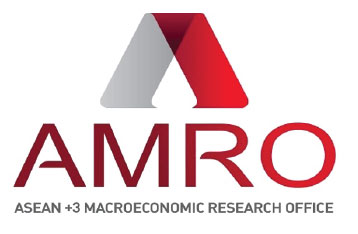This article first appeared in Nikkei Asia on April 3, 2025.
Policymakers must implement safeguards to manage volatile capital flows
The sharp appreciation of the Japanese yen in August 2024 reignited concerns over the broader implications of many investors simultaneously exiting their currency carry trades — a strategy where investors borrow in a low-interest rate currency (the funding currency) and invest in a higher-yielding asset in another currency (the investment currency). The strategy can be highly profitable if the interest rate on the funding currency remains lower than that on the investment currency, and the low-interest rate currency does not appreciate significantly.
For years, Japan’s ultra-low interest rates made the yen a preferred funding currency for carry trades (also known as yen-funded carry trades), particularly against the US dollar, Mexican peso, and Brazilian real. This trend intensified after the US Federal Reserve began aggressively hiking rates in 2022, which widened the yield gap and attracted even more capital into yen-funded carry trades.
In mid-2024, this dynamic began to reverse. A series of developments prompted investors to exit their yen-funded carry trades, which led to a sharp appreciation of the yen. Amid an environment of elevated inflation in the US, weaker-than-expected July employment data raised concerns about a slowdown in the US economy, increasing market volatility. At the same time, the Fed signaled a potential rate cut and the Bank of Japan raised its policy rate, leading investors to rethink yield differentials between Japan and the US.
As a result, the yen strengthened and the yen-funded carry trades lost value. Traders scrambled to exit their positions and limit their losses by buying the yen (and selling their higher-yielding assets), thus contributing to further yen appreciation and snowballing the unwinding of more yen-funded carry trades.
The unwinding of yen-funded carry trades presents both risks and opportunities for ASEAN+3 economies (the 10 members of the Association of Southeast Asian Nations, plus China, Japan and Korea). Historically, these economies have had limited direct exposure to yen-funded carry trades, making them less vulnerable to abrupt shifts in investor sentiment. However, given the interconnected nature of global finance, they are not immune to broader market volatility.
According to AMRO’s analysis, ASEAN+3 currencies have not been the preferred choice for yen-funded carry trade strategies. In typical carry trade dynamics, the funding and investment currencies exhibit a negative correlation — when one appreciates, the other depreciates.
Data shows yen short positions surged from March 2021, and then peaked in June 2024 before reversing course. Stripped of the US dollar effect, emerging market heavyweights like the Brazilian real, Mexican peso, South African rand and Turkish lira exhibited clear negative correlations with the yen, especially during the unwinding phase of the trade. In contrast, most ASEAN+3 currencies barely registered a reaction. Only the Indonesian rupiah and Korean won displayed mild negative correlations. This suggests that, unlike the Mexican peso or Brazilian real, ASEAN currencies were not primary targets for yen-funded carry trades.
Although ASEAN+3 economies have not been primary targets for yen-funded carry trades, the potential risks associated with speculative capital inflows cannot be ignored. If foreign investment surges, it could lead to asset bubbles and financial instability, posing significant risks to economic resilience. Additionally, even with limited direct exposure, large-scale unwinding of carry trades can result in sharp exchange rate fluctuations. Such volatility can disrupt local financial markets and complicate monetary policy decisions, making it imperative for policymakers to remain vigilant.
Furthermore, as ASEAN+3 economies become more integrated into global financial markets, their exposure to external shocks increases. Rising offshore borrowing and the potential investments into local currencies in future carry trades could amplify risks to financial stability.
This growing interconnectedness underscores the need for proactive measures to safeguard economic stability and strengthen financial resilience. To address these risks, ASEAN+3 policymakers must take proactive measures to strengthen macroprudential regulations. Implementing measures such as countercyclical capital buffers can help manage excessive credit growth and stabilize capital flows. Additionally, developing more resilient financial markets is crucial. Expanding domestic bond markets and promoting local-currency financing can reduce reliance on short-term foreign capital, making economies less susceptible to external disruptions.
Another key strategy is enhancing corporate and investor awareness. Greater financial education and stricter oversight of foreign currency borrowing can prevent reckless speculation, ensuring that financial risks are effectively mitigated. By adopting these proactive measures, ASEAN+3 economies can build a more stable and resilient financial environment and be better prepared to address the challenges posed by global capital flows.
While the August 2024 unwinding of yen-funded carry trades had limited direct impact on ASEAN+3 economies, this should not be mistaken for immunity from future risks. As global financial conditions evolve, the region could become a more attractive destination for speculative capital. To navigate these uncertainties and safeguard financial stability in an increasingly interconnected world, ASEAN+3 policymakers must remain vigilant, stay proactive and implement safeguards to manage volatile capital flows effectively.
